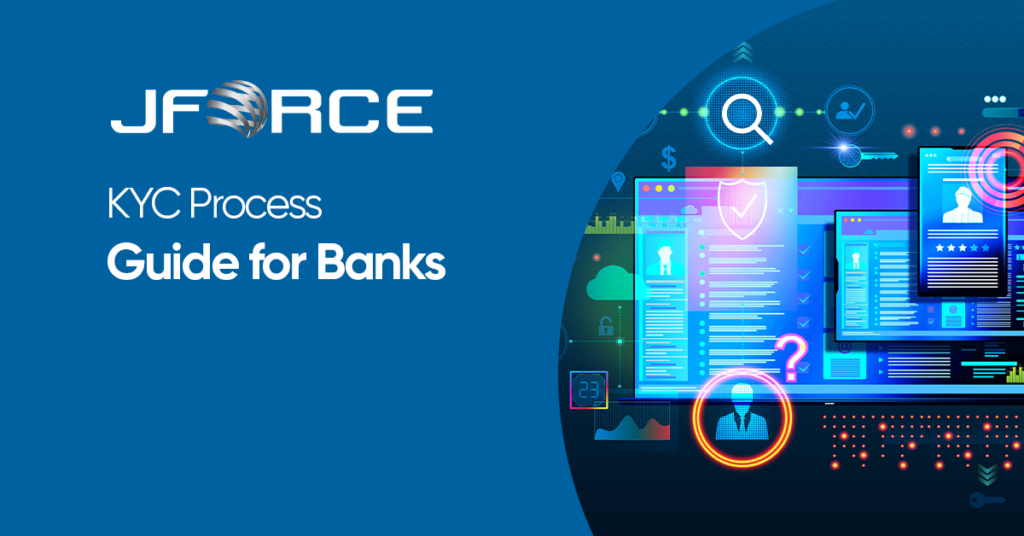
As one of the most dynamic sectors, the banking sector follows technological developments quite closely. While these developments open lots of digital possibilities for banks, they come with increased risk and responsibility. Illegal actors also use the same technological developments, causing a security gap in banks. Therefore, the customer profile of banks requires supervision.
Know Your Customer (KYC) is a customer identification and verification process that is mandatory for banks. As banking evolves digitally, the KYC process has been more and more carefully examined by regulators. Hence, banks are struggling to keep track of the rules and changes in KYC requirements.
In this article, we will overview the KYC process to give you a sense of the essential aspects of the KYC implementation. Following this guide will help your bank to operate safely and successfully in the digital banking space.
What is KYC, and why is it required?
As briefly stated above, KYC is the practice that centers on the identity verification of their clients firstly during the customer onboarding process. At this initial phase, the user is obliged to prove the authenticity of their identity with legal and binding evidence. Face-to-face KYC is relatively straightforward, but after the pandemic, KYC is increasingly carried out remotely, a process known as eKYC (electronic Know Your Customer).
KYC is a global necessity for banks as well as other financial institutions to comply with up-to-date laws and regulations mandated by mechanisms such as AML (Anti Money Laundering). Thus, the primary aim of KYC is to prevent any criminal activity such as money laundering or terrorism financing. Another dimension of KYC requirements is to ensure the first-hand responsibility of the customer to prevent online fraud or any other misuse of the bank account.
Why is KYC important for banks?
The key importance of the KYC process is that it helps banks avoid regulatory penalties. The safest way to prevent illegal activity is an effective KYC process in onboarding and repeated background checks. Then, scammers cannot easily access your platform, and you can protect all the customer data. KYC should be carefully implemented because KYC compliance is under banks’ own responsibility.
Beyond the broader security concerns that we mentioned above, customer information derived through KYC helps banks address the specific financial risks of customers. At the end of the day, effective financial risk management is required for the well-functioning resource allocation of a bank. For banks, KYC compliance shows the bank’s commitment to keeping its customers safe. This enhances the trust relationship between the bank and its customers.
The smoothness of customer relations is extremely important in the banking industry as there is always a certain level of risk involved. The name shows the importance: Know Your Customer. Do not forget that a bank’s reliability is super important for its global image. KYC is a solid step in building prestige.
How could banks benefit from KYC?
When it is applied effectively, KYC is extremely beneficial for both customers, banks, and financial systems. Preventing illegal activities with KYC will make the financial system more trustworthy. Trust enhances financial stability in the local economy or the country. In turn, a safer financial system will enable banks to increase the volume of lending and transactions. Thus, banks will increase their profits.
Thanks to the KYC process, you can reach the past financial history of the customers and perform a risk assessment in terms of assets and liabilities. In this way, you can track possible risks from the customers and analyze these risks’ significance for your future operation. Risk assessment and analysis will decrease the overall risk on your lending portfolio and help you achieve higher profit margins.
The administrative burdens and high costs of implementing a compliant KYC process come with hardness, especially for small banks. However, thanks to digitalization, you can turn this into a competitive advantage and get the maximum benefit from KYC. A digitalized KYC process improves the customer experience you provide while keeping you safe.
Many banks perceive KYC as one-time customer interaction and never bring it up again. It is not the reality. Identity verification must be an ongoing experience for maximum safety for all parties. When new regulations arise, the KYC process must be easily adaptable for your banks’ customers. This means providing simple and secure online tools for customers to find their information and manage it themselves. This kind of automated solution can help you reduce investigative costs without annoying your customers.
Wrap Up
As the methods of fraudulent activities get more and more sophisticated, banks must catch and surpass them. To keep your bank updated on the KYC process, paying attention to new regulations is the first thing to do. Then you can easily address safety threats and other financial risks.
An efficient KYC process is great for every actor in the financial industry. Moreover, digital solutions help banks to improve their KYC efficiency while reducing costs. Thanks to digital transformation, KYC will turn into an effortless process and drive value for your bank globally.
